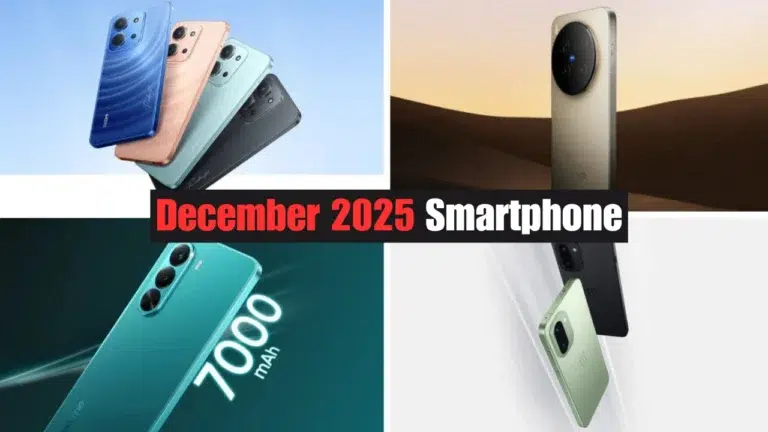Introduction
Science fiction has long been a source of inspiration, imagining futuristic technologies that push the boundaries of human capabilities. As we step into 2025, many of these once-fantastical concepts are becoming reality, shaping industries, daily life, and the way we interact with the world. This article explores ten groundbreaking technologies that have transitioned from science fiction to reality, transforming our world in unprecedented ways.

Key Points Overview
- Artificial Intelligence (AI) and Machine Learning
- Augmented Reality (AR) and Virtual Reality (VR)
- Quantum Computing
- Holographic Displays
- Brain-Computer Interfaces (BCIs)
- Autonomous Vehicles
- Personalized Medicine
- Space Tourism
- 3D Printing and Additive Manufacturing
- Robotics and Automation
Detailed Discussion
1. Artificial Intelligence (AI) and Machine Learning
From Fiction to Reality
AI has been a staple of science fiction, often depicted as intelligent machines capable of human-like reasoning and decision-making. Today, AI is integrated into various sectors, from healthcare diagnostics to financial forecasting, enhancing efficiency and automating complex processes.
Current Developments
By 2025, AI systems have reached new heights, offering real-time language translation, predictive analytics, and autonomous decision-making in critical environments. AI models are now capable of understanding and adapting to human behavior, making interactions more intuitive and natural.
Impact
The widespread adoption of AI is revolutionizing industries, streamlining operations, reducing human error, and enabling innovations in medicine, finance, and education.
2. Augmented Reality (AR) and Virtual Reality (VR)
From Fiction to Reality
Immersive virtual worlds and augmented experiences have long been envisioned in sci-fi, from “The Matrix” to “Ready Player One.” Today, AR and VR are transforming entertainment, education, and professional training.
Current Developments
In 2025, devices like Apple’s Vision Pro and Microsoft’s HoloLens offer seamless integration of digital overlays onto the physical world. AR applications enhance real-time navigation, medical training, and remote collaboration.
Impact
AR and VR provide immersive learning experiences, realistic simulations for job training, and interactive gaming environments, bridging the gap between the virtual and physical realms.
3. Quantum Computing
From Fiction to Reality
Quantum computing, once a concept confined to science fiction, is now at the forefront of technological breakthroughs, with the potential to solve problems far beyond the reach of classical computers.
Current Developments
In 2025, companies like IBM and Google have made significant strides in quantum processing, enabling rapid advancements in cryptography, material science, and artificial intelligence.
Impact
Quantum computing is set to revolutionize industries by solving complex optimization problems, improving drug discovery, and securing communications with unprecedented computational power.
4. Holographic Displays
From Fiction to Reality
Holographic projections have been a sci-fi dream for decades, from “Star Wars” to “Iron Man.” In 2025, this dream is becoming a reality, enabling futuristic communication and display technologies.
Current Developments
Holographic technology now allows real-time 3D projections without the need for special glasses, enhancing medical imaging, interactive advertising, and virtual meetings.
Impact
Holographic displays provide new ways to visualize and interact with data, benefiting fields like telemedicine, design, and education.
5. Brain-Computer Interfaces (BCIs)
From Fiction to Reality
The ability to control devices with thoughts has been a recurring theme in sci-fi. Today, BCIs are making this a reality, allowing direct communication between the human brain and external devices.
Current Developments
In 2025, neural implants enable individuals to control prosthetic limbs, communicate without speech, and even enhance cognitive functions through direct brain stimulation.
Impact
BCIs have the potential to restore mobility for disabled individuals, revolutionize human-computer interactions, and pave the way for new forms of human augmentation.
6. Autonomous Vehicles
From Fiction to Reality
Self-driving cars and unmanned aerial vehicles have been depicted in countless sci-fi stories. Now, they are becoming an integral part of modern transportation.
Current Developments
By 2025, autonomous vehicles navigate complex urban environments with advanced sensors and AI-driven decision-making, enabling self-driving taxis, trucks, and delivery drones.
Impact
Autonomous transportation promises to reduce traffic accidents, lower commuting costs, and improve accessibility for individuals with disabilities.
7. Personalized Medicine
From Fiction to Reality
Sci-fi often envisions futuristic medicine tailored to individuals. Today, advances in genomics and biotechnology are making personalized treatments a reality.
Current Developments
In 2025, AI-driven genetic analysis helps doctors develop customized treatments for diseases based on a patient’s genetic profile, increasing treatment efficacy and reducing side effects.
Impact
Personalized medicine is improving patient outcomes, paving the way for preventive healthcare, and revolutionizing drug development.
8. Space Tourism
From Fiction to Reality
Space travel for civilians has been a long-time sci-fi fantasy. Now, private spaceflight companies are making it possible for tourists to experience space firsthand.
Current Developments
By 2025, companies like SpaceX and Blue Origin offer suborbital and orbital flights, allowing passengers to experience weightlessness and breathtaking views of Earth.
Impact
Space tourism is expanding the possibilities of commercial space travel, increasing investment in space technology, and inspiring a new generation of explorers.
9. 3D Printing and Additive Manufacturing
From Fiction to Reality
The ability to create objects on demand has been a recurring theme in sci-fi. Today, 3D printing is revolutionizing manufacturing and healthcare.
Current Developments
In 2025, 3D printing is used to produce complex structures, prosthetic limbs, and even human organs, making manufacturing faster, cheaper, and more efficient.
Impact
3D printing enables rapid prototyping, customization, and reduced material waste, benefiting industries from aerospace to medicine.
10. Robotics and Automation
From Fiction to Reality
Sci-fi often portrays robots as helpers and workers. In 2025, robotics is playing an essential role in various sectors, from healthcare to construction.
Current Developments
Advanced robots now perform surgeries, assist in disaster relief, and automate labor-intensive tasks, improving efficiency and safety.
Impact
Automation is increasing productivity, reducing human labor for dangerous jobs, and reshaping the global workforce.
Conclusion
As we move further into 2025, the line between science fiction and reality continues to blur. These technologies are not only transforming industries but also redefining human potential. From AI and quantum computing to space tourism and personalized medicine, the future we once imagined is now unfolding before our eyes.
FAQs
Q1: How is AI transforming industries in 2025?
AI is automating processes, improving decision-making, and personalizing user experiences across sectors like healthcare, finance, and education.
Q2: Is space tourism affordable in 2025?
Currently, space tourism is expensive, but ongoing advancements and competition are expected to lower costs in the future.
Q3: Are autonomous vehicles safe?
Yes, AI-driven safety systems make autonomous vehicles safer than human-driven cars in controlled environments, but challenges remain in unpredictable traffic conditions.
Q4: Will quantum computing replace traditional computers?
Not yet. Quantum computers complement traditional systems, solving specialized problems that classical computers struggle with.
Q5: How soon will BCIs become mainstream?
While BCIs are advancing rapidly, widespread adoption may take another decade due to regulatory, ethical, and technological challenges.




